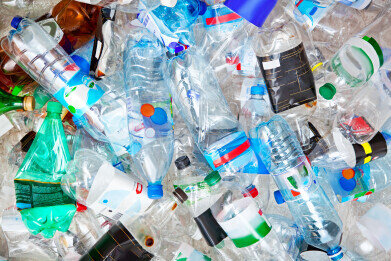Environmental laboratory
How does NIR spectrometry aid plastic recycling?
Jun 04 2024
Plastic waste comes thick and fast, frustrating most human efforts to separate it for proper recycling and exacerbating the plastic pollution crisis. Whilst there are Plastic Resin Codes (RICs) 1-7 to indicate which items are composed of similar plastics, each Code tends to bunch together multiple sub-types of plastic that must be separated from each other for recycling – and cross-contamination between Codes that are stored together can create even more categories of distinct plastic. So, with mountains of plastic to get through, it can be exceedingly difficult for people to quickly and accurately separate all of the different plastics using RICs alone. Instead, NIR spectrometers analyse the composition of plastic items in real time to ensure that they can be correctly separated.
How do NIR spectrometers help to sort plastics?
According to the Association of Plastic Recyclers, when it comes to plastic recycling, NIR spectrometers have two modes, as it were: a transmission mode, in which radiation passes through the item onto a receptive surface, or a reflection mode, where radiation is reflected back onto a receptive surface. The effect is much the same in either case, with certain portions of the near-infrared spectrum either absorbed or not, leaving you with a reading that tells you what sort of material you’re dealing with. Once this has been decided, air jets direct the item into either the waste or recycling streams. During mechanical plastic recycling, NIR spectrometry is typically applied at two points. Firstly, it is applied to whole items, so that large bales of similar plastics can be formed and then shredded (or ‘flaked’). After this shredding, NIR spectrometry is applied once more as a safeguard.1
What challenges does NIR spectrometry face in plastic recycling?
As with the success of plastic recycling in general, much of the success of NIR sorting boils down to properly designing items for this process – in fact, the Association of Plastic Recyclers has developed a test to ascertain whether a given item is suitable for NIR spectrometry.
For the most part, they claim that it’s either labelling or colouring that renders certain items incompatible with this method of sorting. Labels that cover more than 75% of an item’s surface tend to interfere with spectrometry, ‘confusing’ the instrument by blocking radiation or by producing a reading for its polymer, rather than that of the item itself. Similarly, different colours have different light reflectance and L* values, adding complexity to spectometry results by comparison to clear items. A light reflectance value (LRV) is a number between 0 (full-absorption black) and 100 (full-reflection white) assigned to a given colour. A similar measurement, a colour’s L* value indicates its lightness or darkness on a scale between 0 (dark) and 100 (light). For the APR, items with an LRV less than or equal to 10 or L* = <40 – in other words, near-black items - need to be double-checked to see if they are amenable to NIR spectrometry.2
Can NIR spectrometry solve the problem of plastic variety?
Whilst it’s undeniably true that NIR spectrometry can handle a vast variety of different polymers, plastics differ along other dimensions besides their molecular composition, dimensions which this method is less adept at understanding. For instance, though both are composed of PET#1, a plastic bottle and a plastic clamshell container are manufactured differently, one by blow-molding and the other by thermoforming, a difference that necessitates separation for recycling but won’t show up on your spectrometer’s readings.3 You could try a Raman spectrometer, instead, which is much more insightful when it comes to things like crystallinity (which production methods like thermoforming or blow-molding impact) - but they’re far slower than NIR spectrometers, a sticking point for such a fast-paced application.
Nevertheless, NIR spectrometers will continue to be an essential tool in the arsenal of plastic recyclers, and no doubt further innovations in this method are somewhere down the line. To increase their effectiveness, changes in design standards for plastics are probably needed, in line with a more comprehensive overhaul to ensure that all commercial polymers are recyclable.
1 Near Infrared (NIR) Sorting in the Plastics Recycling Process. The Association of Plastic Recylers. 2018.
2 Evaluation of the Near Infrared (NIR) Sorting Potential of a Whole Plastic Article. The Association of Plastic Recyclers. 2018.
3 Plastic Recycling Doesn’t Work and Will Never Work. The Atlantic. Judith Enck and Jan Dell. 2022
Digital Edition
AET 29.2 May 2025
May 2025
Water / Wastewater- From Effluent to Excellence: Microbiological assessment of a containerized modular water reuse pilot system- Without water everything comes to a haltAir Monitoring- Probe Sampli...
View all digital editions
Events
Jun 17 2025 Guangzhou, China
Singapore International Water Week Spotlight 2025
Jun 23 2025 Singapore
Jun 24 2025 Santa Clara, CA, USA
Jun 25 2025 Sao Paulo, Brasil
Jun 28 2025 Albena, Bulgaria



_Robert_Bonnie_in_Missouri_on_26_June_2024_-_24.jpg)




.jpg)










